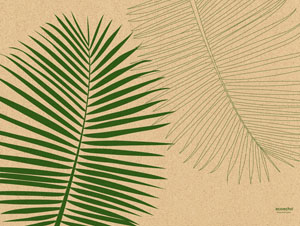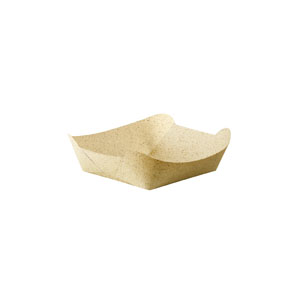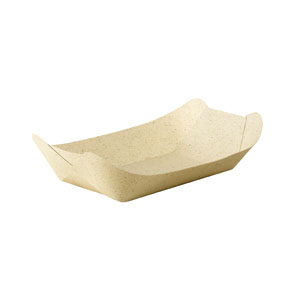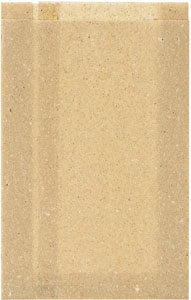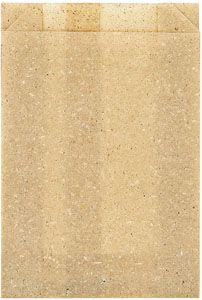In the paper mill, new paper is produced from wood and recovered paper. In 2020, the proportion of recovered paper used in paper production was 79 percent on average - compared to 49 percent in 1990. [1] As a result of this increase, the consumption of wood, water and energy per ton of paper has already fallen significantly in recent decades. A decisive advantage of grass-based paper is that it again greatly reduces the consumption of fresh wood by paper mills. Depending on the end product, up to 50 percent of the waste paper and wood fibers required can be replaced by grass fibers. By choosing appropriate packaging materials, caterers can also make an important contribution to protecting the forest.
There are also a number of advantages to be found in the production process of grass paper: The raw material can be produced from the green waste of any meadow. Such unused "compensation areas" are ubiquitous in Germany - and are usually cut back regularly on behalf of the public sector. In this respect, trees do not have to be felled for grass fiber production, nor do they have to be imported to Germany over long transport distances. In this way, the forest is preserved as a habitat and vital CO2 reservoir for our planet, while emissions-intensive transport is minimized. In addition, the grass on the compensation areas grows back much faster than the tree population.
[1] Source: Federal Environment Agency. 2022. waste paper. https://www.umweltbundesamt.de/daten/ressourcen-abfall/verwertung-entsorgung-ausgewaehlter-abfallarten/altpapier.
What is grass paper?
Let's first clear up a common misconception: Grass paper is not paper made from 100 percent grass. Instead, we talk about grass paper when grass fibers are added to conventional paper made from wood and/or recovered paper fibers during the manufacturing process. The amount of grass fiber in the pulp composite depends entirely on the desired end product: between 30 and 50 percent of the material used can be replaced by the sustainable raw material.
For stationery made from grass paper, the grass content tends to be lower than for board and cardboard, because a lighter color is desired for printing paper, for example. Meanwhile, the higher grass content in cardboard and paperboard makes grass paper particularly interesting for resource-conserving catering. This is because large quantities of wood and waste paper can be saved via food packaging with grass fibers!
Where is grass paper produced?
Long transport routes and the associated CO2 emissions reduce the eco-balance of many packaging materials. Of course, this also applies to wood. Fortunately, paper production has already become much more resource-efficient thanks to the reuse of waste paper. By using as much grass fiber as possible, production takes another big step toward protecting forests. After all, grass grows literally everywhere in Germany and can therefore be harvested and processed directly on site.
For the production of food packaging, the switch to grass paper is particularly worthwhile! After all, not all waste paper is suitable for reuse as packaging. Printing ink and other ingredients are possible exclusion criteria. With newly produced, environmentally friendly grass-paper, on the other hand, this aspect plays no role.
How is grass paper disposed of?
Just like normal paper without grass fibers, grass paper can simply be disposed of in the paper waste. Since the raw material is completely biodegradable, it can theoretically even be disposed of in domestic compost or organic waste. However, it is much more environmentally friendly to recycle it in the paper waste, provided that there are no too coarse food residues adhering to the grass paper.
Tip: It's best to point out the correct method of disposal to your guests - your customers will appreciate your commitment to the environment.

